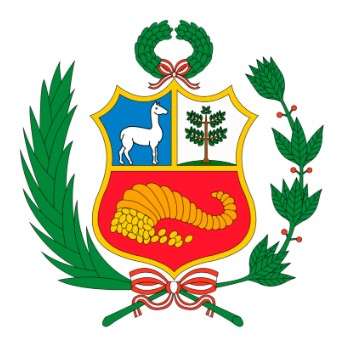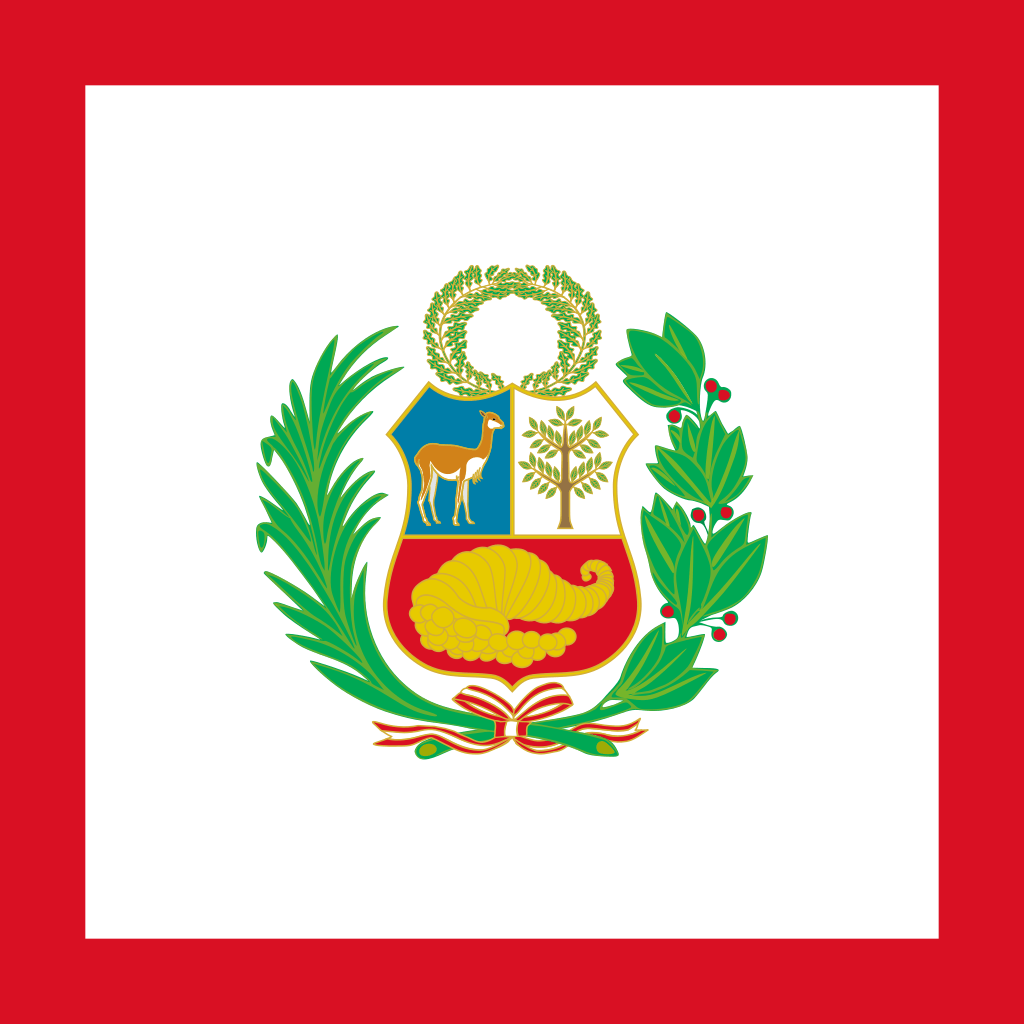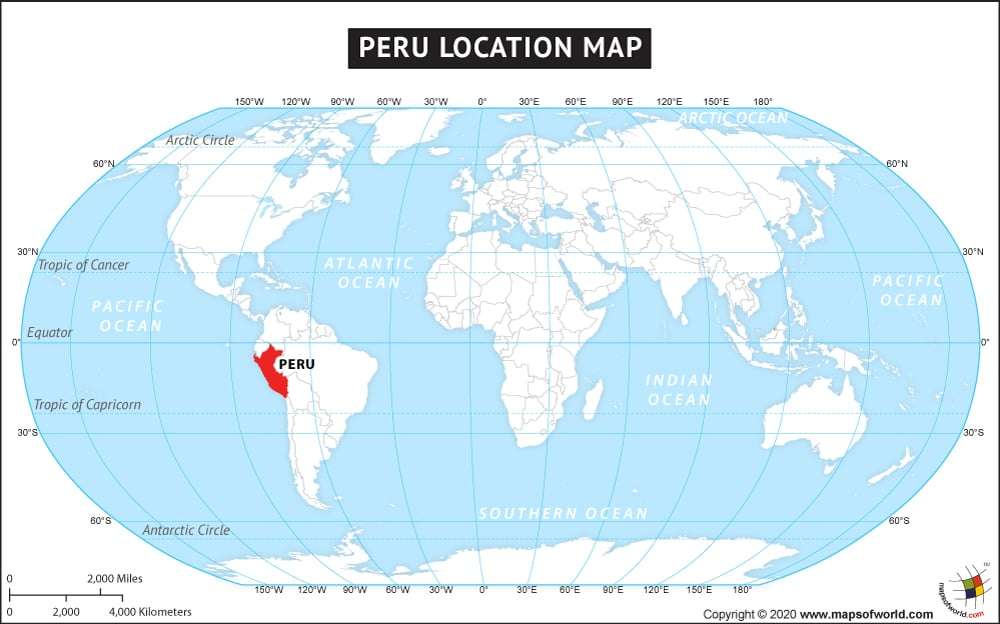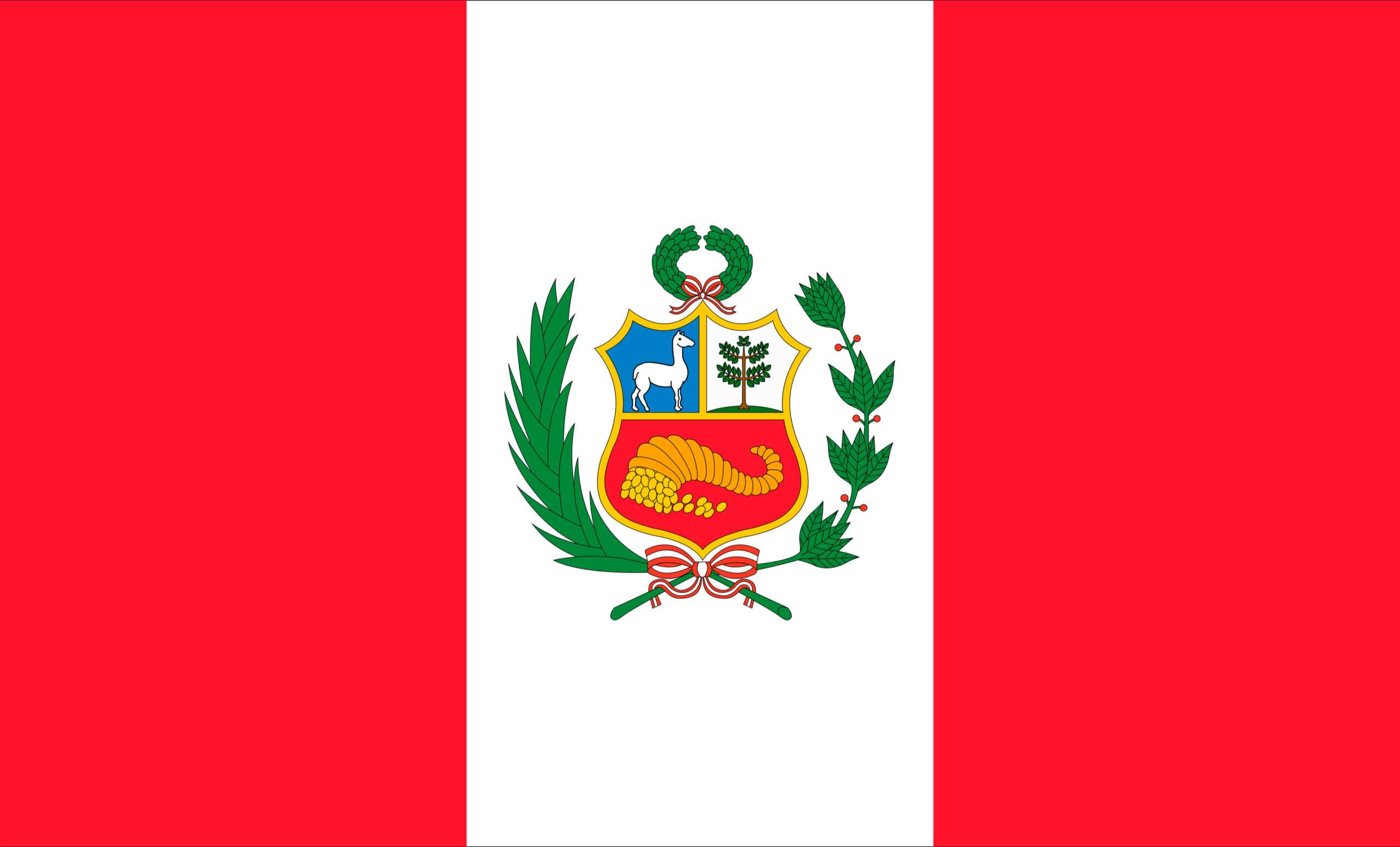
Peru is a nation located in western South America. Its borders primarily run through sparsely populated areas, except for the southeast region surrounding Lake Titicaca. The borders with Colombia and Brazil traverse through lower mountain ranges and tropical forests, while the borders with Bolivia, Chile, and Equator run through the high Andes mountains.
Colours
- The national flag of Peru was officially adopted in 1824 and later modified in 1950.
- The flag, as outlined in the Constitution of Peru, is a vertical three-striped design featuring red on the outer stripes and white in the middle.
- Depending on its usage, the flag may include additional emblems and may have different names.
- Peru celebrates Flag Day on June 7th, commemorating the Battle of Arica.
Symbol And Meaning
The color red symbolizes the bloodshed that occurred during the fight for freedom, while white represents purity and peace. These colors are also related to the parihuanas, a type of flamingo with red and white plumage, which is said to have been seen in the dreams of General San Martín during the revolution. The design of the current Peruvian flag was influenced by the ideas of San Martín and Torre Tagle.
Amazing Facts About The Flag Of Peru
| National Flag Of Peru | Bandera Nacional |
| Proportion | 2:3 |
| Adopted | 31st March 1950 |
| Design | A vertical triband of red (hoist-side and fly-side) and white with the National Coat of Arms centered on the white band. |
History Of Peru’s Flag
The initial national flag of Peru was established in 1820 when José de San Martín and his troops from the Army of the Andes arrived from Argentina and Chile.

Image Source: Wikipedia
José de San Martín designed the first Peruvian flag that was composed of the colors red and white, said to have been selected because San Martín saw a flock of flamingos flying upon his arrival. The design of the flag was distinctive, featuring a diagonal division that created two white and two red triangles with a coat of arms in the center.
When local independence supporters gained control, another flag was adopted on March 15, 1822. However, this new flag resembled that of Spain as it had equal red-white-red horizontal stripes with a red sun, which was the traditional symbol of the Inca empire, in the center.
This led to confusion and it was soon changed on May 31st, to a flag with vertical stripes, but the sun symbol remained in the center.
On February 25, 1825, the flag of Peru was changed to its current design. The flag still featured the red-white-red vertical stripes as before, but the sun on the flag was replaced by a new coat of arms.
The coat of arms

The coat of arms features a shield that is surrounded by a wreath of palm and laurel branches and has three sections that represent national pride and wealth. The first section of the shield features a vicuña, a type of animal that is related to the llama and alpaca and represents the wealth of Peru’s fauna, as well as freedom, national pride, and heroism. The second section of the shield shows a cinchona tree, which is used to make quinine.
The final section of the shield shows a cornucopia from which gold and silver coins are spilling out, symbolizing the nation’s mineral wealth.
The white stripe of the flag represents purity and the red stripe represents the blood of those who fought for the country. Typically, only the stripes are shown on the flag when used by private citizens, and the coat of arms is only used on official government flags.
Variants Of Peru’s Flag
Civil Flag
The civil flag, also known as the national ensign, is flown by private citizens and does not have any additional features. It has undergone several changes over time; before 1950, it had the same design as the current national flag and was used as both the civil and state flag.
However, in 1950, General Manuel A. Odría removed the coat of arms from the flag and created separate flags for state and military use. As a result, the civil flag no longer includes the coat of arms.
State flag – Pabellón Nacional
The state flag, also known as the national flag, is used by government institutions and features a coat of arms. It is typically used during ceremonies where the flag is being raised in front of an audience, as opposed to being displayed permanently.
There is also a variant of this flag called the national standard, which is used indoors by both official and private institutions. This flag is used in places like the Government Palace and the United Nations, and also by the Peru national football team.
War flag

Image Source: Wikipedia
The war flag, which is similar to the state flag, features the national shield. It is used by the Peruvian military and national police and usually has the service, name, and number of the unit inscribed on it. This flag is flown by the military and national police.
Naval jack

Image Source: Wikipedia
The naval jack is a flag that differs from the tri-band flag, it is a square flag with a white field and a coat of arms in the center on a red background. It is flown on naval ships and typically flows alongside the flag of the highest-ranking officer on board.
FAST FACTS ABOUT PERU
| Official Name | República del Perú (Spanish) (Republic of Peru) |
| Form Of Government | A unitary, multiparty system of government in which there is a single legislative body, known as the Congress of the Republic. |
| Head Of State And Government | President |
| Capital | Lima |
| Nation Anthem | Himno Nacional de Peru |
| Official Languages | Spanish; Quechua (locally); Aymara (locally) |
| Largest City | Puerto Maldonado |
| Currency | Sol (S/) |
| Population: (2022 est.) | 33,563,000 |
| Most Popular Sport | Football |
| National Sport | Paleta Frontón |
| Peru’s National Flag | Bandera Nacional |
| National Flag Day | 7th June |
The name Peru originates from a Quechua word that means “land of abundance,”. It refers to the wealth generated by the powerful and well-organized Inca civilization that ruled the area for centuries. The country’s abundant natural resources, including minerals, agriculture, and marine resources, have long been the foundation of the country’s economy.
Peru is primarily located in the tropical region, with its northern part close to the equator. Despite its tropical location, the country has a diverse range of climates, lifestyles, and economic activities due to the extreme variations in elevation and the presence of the southwest winds that blow in from the cold Peru Current along the Pacific coast.
The rugged terrain of the Andes has historically made it difficult for the country to unite as a whole.
In the late 20th century, tourism also became a significant contributor to Peru’s economic development. Popular destinations for international tourists include Machu Picchu, an ancient Inca ruin located around 50 miles northwest of Cuzco, and museums showcasing artifacts excavated from ancient tombs in the northern coastal region of Peru.
Culture and Architecture Of Peru
Peruvian culture is a combination of the cultures of indigenous peoples of the Americas, European, and African groups. The diversity of ethnic groups and the rugged landscape of the country have allowed for a wide range of cultural traditions and customs to develop. There are also minor influences from other groups such as Chinese, Japanese, and Europeans.
Peruvian traditional clothing is characterized by its beauty. In some areas, women wear multiple bright skirts called polleras. They may wear black skirts with wide embroidered belts, or cotton petticoats with detailed designs.
Ponchos are a staple clothing item in the highlands, where the weather can be quite cold. The ponchos of Cajamarca and Puno are long and striking, while those from Cuzco are shorter. Woolen or straw hats are also common accessories.
Peruvian architecture is a blend of European architectural styles and indigenous design elements. Some of the most notable examples of early colonial architecture include the Cathedral of Cusco and the Church of Santa Clara in Cuzco.
Wildlife Of Peru
Peru boasts an abundance of plant and animal life due to its diverse geographical regions including its coastline, mountain range, and major river, making it among the countries with the highest biological diversity in the world.

Peru boasts 53 protected natural areas, one of the most renowned being Manu. Despite its remote location, which can only be reached by air or river, it is considered the most biologically diverse region in the Peruvian Amazon and is definitely worth visiting. The reserve is home to 13 species of monkeys, 1000 bird species, 200 different mammals, and a wide variety of butterflies.
The Government Of Peru

Image Source: mapsofworld
Peru is governed as a presidential representative democratic republic with a multi-party system. Peru has traditional three branches of government: Executive, Legislative, and Judicial.
In terms of foreign relations, Peru has had some disputes with neighbouring countries such as Ecuador and Chile. However, it is a founding member of the Andean Community of Nations.
By: Richa Singh



